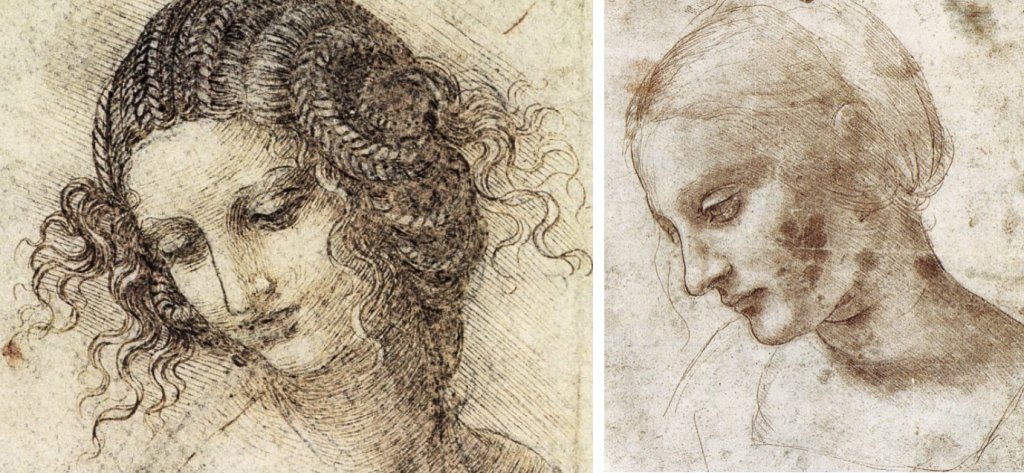da Vinci and the Renaissance 2020 Dashboard
Description
 Da Vinci and the Renaissance is a fully cross-disciplinary study-abroad program that explores the transition from the medieval period to the Renaissance across multiple subjects (art, architecture, engineering, science and more), laying out how much of what we take for granted today about technology or about the human subject were implemented in this rich period, especially in Italy. Our focus will be that most famous “Renaissance man,” Leonardo da Vinci. The course’s interdisciplinary approach asks students to think about the constructed nature of the things we take for granted as “natural” (e.g., time, space, human subjectivity, meaning, sight, knowledge, and law), thus opening our eyes to the significance of cultural differences. We will also consider the many ways that we are now seeing a cultural, ontological, and epistemological shift that is as far-reaching as the one between the medieval period and the Renaissance
Da Vinci and the Renaissance is a fully cross-disciplinary study-abroad program that explores the transition from the medieval period to the Renaissance across multiple subjects (art, architecture, engineering, science and more), laying out how much of what we take for granted today about technology or about the human subject were implemented in this rich period, especially in Italy. Our focus will be that most famous “Renaissance man,” Leonardo da Vinci. The course’s interdisciplinary approach asks students to think about the constructed nature of the things we take for granted as “natural” (e.g., time, space, human subjectivity, meaning, sight, knowledge, and law), thus opening our eyes to the significance of cultural differences. We will also consider the many ways that we are now seeing a cultural, ontological, and epistemological shift that is as far-reaching as the one between the medieval period and the Renaissance
The 3 credits will be split between 8 weeks of instruction at Purdue (1 credit) and our study-abroad program to Venice and Florence (2 credits). In Italy, we will see a number of things that we will have discussed before getting on a plane together. We will also think about the nature of confronting a different culture and of being a tourist in a foreign land.
Galleries, Timelines, and Maps
There is no content in this group.
Individual Entries
Fogelsville, Pennsylvania is a city in Pennsylvania where the nonprofit organization called Leonardo da Vinci's Horse Inc was founded by Charles Dent, the retired Pennsylvanian airline pilot. A model of the horse statue that Leonardo da Vinci originally designed was created in Fogelsville and then delivered to the Tallix Art Foundry to be approved. Years later, and after changing the model significantly, work on the horse statue began.
“Da Vinci’s Horse at Tallix Beacon.” Polichtallix.com, 15 Nov. 2012, www.polichtallix.com/2012/11/15/da-vincis-horse-at-tallix-beacon/.
Milan is a city of the Lombardy region in northern Italy. Leonardo da Vinci lived in Milan for around twenty years in order to work for the Sforza family. There, he created his first plans for the largest equestrian statue in the world. He was forced in 1499, though, when Milan was invaded by the French and the Sforza family fled the city. Leonardo would later return to Milan in 1506.
“History - Leonardo Da Vinci.” BBC, BBC, www.bbc.co.uk/history/historic_figures/da_vinci_leonardo.shtml.
This is the place where Jesus Christ is believed to have been baptized, in the Jordan River. It is now considered an important place where many Christian pilgrims visit during their pilgrimage to the Holy Land. It is considered the land of Jesus Christ's "spiritual birth" (as opposed to his physical birth in Bethlehem), and has also been named the third holiest place in the world by many Christians.
The Jordan River is often mentioned in the Bible. In fact, in so many different Biblical chapters throughout the Old Testament, it is alluded to as a sort of boundary separating yet connecting two different lands. For example, in the story of Moses, the land across the Jordan River is the "promised land". The Jordan River is where the Israelites famously crossed after their Exodus from Egypt, when they sought to cross the river into the promised land.
In the New Testament, however, the Jordan becomes a land where baptisms occur. After Jesus Christ is baptized, he and his...
more